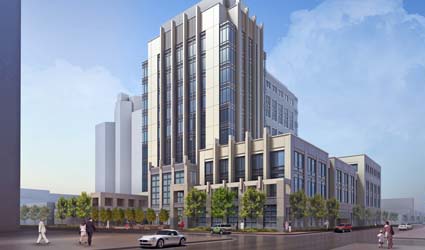Green construction has become more and more popular over the past decade, reports Risk Management. Monitor. Businesses and homes are turning to green while the government encourages it through tax incentives.
But going green is not just about sustainable or local products in construction. It involves specific construction standards, various rating systems and green construction codes. A session at the RIMS Annual Conference & Exhibition helped us understand the complexities of green construction. Speaking on the matter were: Stephen Grossmark, partner at Tressler, James McIlnerney, vice president, field operations and risk manager for Leopardo and Matt Lumelleau, producer for Lockton Companies.
There are many different green construction standards depending on what type of construction is being done and what the intent is. ASTM International (formerly the American Society for Testing and Materials) is known as the gold standard for green construction standards. There is also ASHRAE (the American Society of Heating, Refrigerating and Air Conditioning Engineers), which focuses on building ventilation.
And of the different green construction rating systems, the most prominent is LEED (Leadership in Energy and Environmental Design), which addresses:
Sustainable sites
Water efficiency
Energy and atmosphere
Materials and resources
Indoor environmental quality
Innovation in operations and regional priority (using local products)
With LEED there are four certifications: certified, silver, gold, platinum. As the speakers said, LEED is a flexible program as to the number of points needed to earn a green construction certification and how they are earned. “It’s not whether you can get a green certification, it’s how green are you going to be,” said Grossmark. “Basically, the whole point of LEED is to convert structures from energy efficiency to energy neutral to energy-producing buildings,” he added. According to McInerney, there is a basic formula for sustainable design. He believes that design plus construction plus commissioning equals:
Higher productivity
Healthier conditions for occupants
Meeting green market demands
Potential tax credits
But of course, as McInerney pointed out, there are performance and contractual concerns. As with anything, there are risks involved. The major causes of loss for green buildings are:
Envelope leaks
Electrical fires
Plumbing leaks
Mold growth
Building code and rating upgrades
Unknown green construction risk
Vegetative roofs (the weight of the soil can cause problems)
Indoor air-quality problems (can use vapor extrusion to move bad air out)
Materials characteristics and integration
Brownfield sites (environmental exposures related to prior land use)
Then there are the builder’s issues, including:
Inexperienced contractors and subcontractors
LEED projects require experienced personnel
Alternative energy and other advanced systems/learning curves
“Greenwashing”
LEED point challenges
“If it’s your first time building a green building, you’re not going to get everything right,” said Lumelleau.
There are two ways of dealing with that from insurance standpoint: OCIPs (owner-controlled insurance programs) and CCIPs (contractor controlled insurance program). Current carriers of such insurance include Liberty, Fireman’s Fund, FM Global, Travelers, Zurich, GenRe and Lexington/AIG. Many times, carriers will offer discounts for green-certified buildings for property coverage or upgrades to greener technologies after a loss occurs. Read More.


[…] Green Construction Risks and Rewards – North Carolina … […]
Comments are closed.